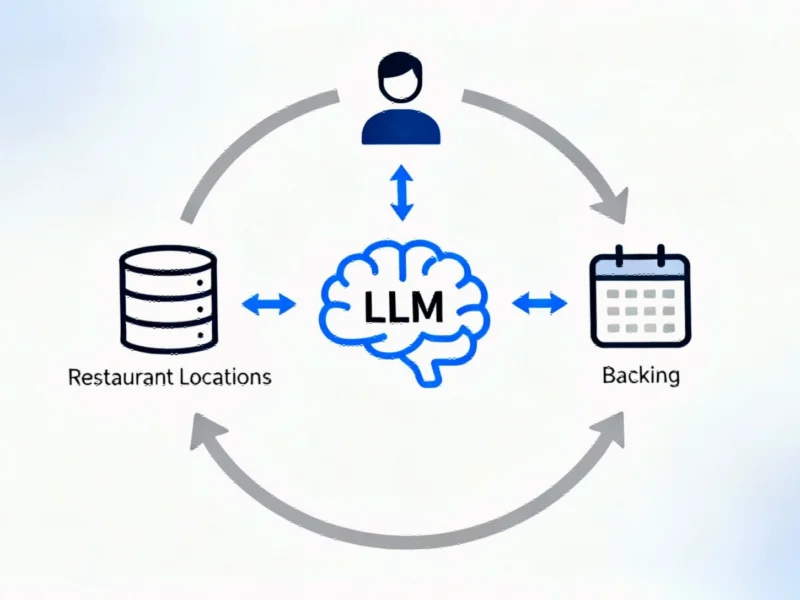In a significant breakthrough for industrial AI applications, researchers from Stanford University and Sambanova have developed Agentic Context Engineering (ACE), a novel framework that enables artificial intelligence systems to continuously improve through what they term “evolving playbooks.” This approach fundamentally transforms how AI agents manage and utilize contextual information, addressing critical limitations that have hampered previous systems. The development comes as industrial computing platforms increasingly demand more sophisticated AI capabilities to handle complex operational environments.
Unlike traditional methods that often degrade performance as systems accumulate information, ACE maintains and enhances AI effectiveness over time. The framework’s timing is particularly relevant given the growing strain on power infrastructure from expanding AI datacenter operations, making efficiency improvements crucial for sustainable deployment.
The Context Engineering Challenge in Industrial AI
Context engineering has emerged as a cornerstone technology for enterprise AI systems, allowing developers to guide model behavior without the expensive process of retraining or fine-tuning. Instead of modifying the underlying model parameters, context engineering works by strategically organizing the input information that shapes an AI’s responses and decisions.
This approach offers substantial advantages for industrial applications, where interpretability, runtime updates, and knowledge sharing across systems are critical requirements. However, existing context engineering methods have struggled with two fundamental problems: brevity bias, where systems favor overly concise instructions at the expense of comprehensive guidance, and context collapse, where repeated rewriting of accumulated knowledge causes important details to disappear.
“Context collapse occurs when an AI attempts to compress everything it has learned into a single new version of its prompt or memory,” the researchers explained. “Over time, this rewriting process erases critical details – similar to overwriting a document so many times that key information disappears.” In industrial settings, this could manifest as maintenance systems forgetting past equipment failures or supply chain agents losing track of historical disruption patterns.
ACE’s Three-Pronged Approach to Continuous Learning
The ACE framework introduces a sophisticated division of labor across three specialized components that work in concert to maintain and improve contextual understanding. This modular architecture draws inspiration from human learning processes while avoiding the performance bottlenecks that plague single-model systems.
The Generator produces multiple reasoning paths for input prompts, documenting both successful strategies and common errors. The Reflector then analyzes these pathways to extract key lessons and insights. Finally, The Curator synthesizes these lessons into compact updates and integrates them into the existing playbook structure.
This systematic approach ensures that industrial AI systems can learn from experience without suffering from information degradation. The methodology aligns with broader trends in advanced semiconductor manufacturing that supports increasingly sophisticated AI hardware, creating a virtuous cycle of improvement across the technology stack.
Preventing Context Collapse Through Incremental Updates
ACE incorporates two key design principles that directly address the limitations of previous context engineering methods. First, it employs incremental updates rather than wholesale context rewriting. The context is represented as a collection of structured, itemized components instead of a single block of text, allowing for granular modifications and targeted retrieval of relevant information.
Second, the framework uses a “grow-and-refine” mechanism where new experiences are appended as additional components while existing entries are updated and refined. A regular de-duplication process removes redundant information, ensuring the context remains comprehensive yet compact over time.
This approach proves particularly valuable in environments where critical infrastructure demands reliable, consistent AI performance, such as energy management systems or industrial control environments.
Performance and Efficiency Gains in Real-World Testing
Researchers evaluated ACE across multiple benchmark categories, including agent tasks requiring multi-turn reasoning and domain-specific financial analysis. The results demonstrated consistent outperformance against established baselines, with average improvements of 10.6% on agent tasks and 8.6% on specialized benchmarks.
Perhaps more impressively, ACE achieved these results while significantly reducing computational overhead. The framework adapted to new tasks with 86.9% lower latency than existing methods and required fewer processing steps and tokens. This efficiency advantage is crucial for industrial computing environments where real-time performance and resource constraints are paramount.
Notably, ACE enabled smaller open-source models to match or exceed the performance of much larger proprietary systems. On the AppWorld benchmark, an agent using ACE with DeepSeek-V3.1 matched the average performance of GPT-4.1-powered agents and surpassed them on more challenging test sets.
Industrial Implications and Future Directions
The practical implications for industrial applications are substantial. “Companies don’t have to depend on massive proprietary models to stay competitive,” the research team emphasized. “They can deploy local models, protect sensitive data, and still achieve top-tier results by continuously refining context instead of retraining weights.”
This capability is particularly relevant for sectors with stringent data privacy requirements or specialized domain knowledge. The framework’s transparency also offers advantages for regulated industries, as compliance officers can directly review what the AI has learned through human-readable context rather than interpreting billions of opaque parameters.
The development aligns with broader industry movements toward specialized computing devices that leverage AI capabilities and reflects the growing importance of content delivery systems that increasingly rely on intelligent contextual understanding.
Looking forward, ACE points toward a future where domain experts – from manufacturing engineers to financial analysts – can directly shape AI knowledge by editing contextual playbooks, democratizing AI improvement beyond specialized machine learning engineers. The framework also makes selective information removal more practical, allowing organizations to address outdated or legally sensitive data without model retraining.
As industrial AI systems continue to evolve, approaches like ACE that enable continuous, transparent, and efficient learning will become increasingly critical for maintaining competitive advantage while ensuring reliability and compliance in complex operational environments.
Based on reporting by {‘uri’: ‘venturebeat.com’, ‘dataType’: ‘news’, ‘title’: ‘VentureBeat’, ‘description’: ‘VentureBeat is the leader in covering transformative tech. We help business leaders make smarter decisions with our industry-leading AI and gaming coverage.’, ‘location’: {‘type’: ‘place’, ‘geoNamesId’: ‘5391959’, ‘label’: {‘eng’: ‘San Francisco’}, ‘population’: 805235, ‘lat’: 37.77493, ‘long’: -122.41942, ‘country’: {‘type’: ‘country’, ‘geoNamesId’: ‘6252001’, ‘label’: {‘eng’: ‘United States’}, ‘population’: 310232863, ‘lat’: 39.76, ‘long’: -98.5, ‘area’: 9629091, ‘continent’: ‘Noth America’}}, ‘locationValidated’: False, ‘ranking’: {‘importanceRank’: 221535, ‘alexaGlobalRank’: 7149, ‘alexaCountryRank’: 3325}}. This article aggregates information from publicly available sources. All trademarks and copyrights belong to their respective owners.



